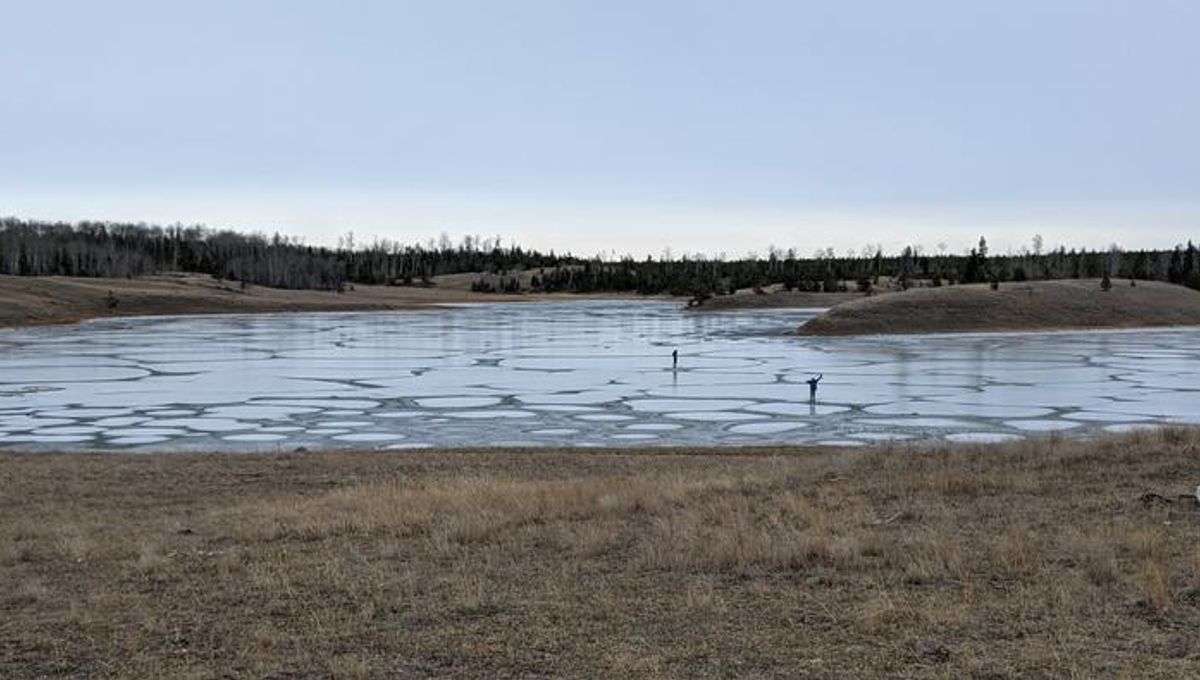
Where did life begin? While musing over this question in 1871, Charles Darwin suggested that the origins of life may have emerged from a “warm little pond” on the surface of the primordial Earth. Since then, scientists have learned that the complex molecules of life can indeed emerge from inorganic materials found in certain bodies of water. All you need are the right conditions. Now new research posits that shallow “soda lakes” in western Canada may match these conditions.
In 1952, the American chemist Stanley Miller, under the supervision of Harold C. Urey, conducted what is now known as the Miller-Urey experiment that tested whether organic molecules could be created from inorganic ones. During this experiment, the scientists found that amino acids (the building blocks of proteins) and other organic molecules could be created from the environmental conditions present on the early Earth. As such, it was a powerful demonstration of chemical evolution, whereby complex chemicals could emerge from simple ones over time.
Since then, researchers have shown that the building blocks of RNA can also be created in similar ways, but through a process requiring extremely high phosphate concentrations. This is because phosphates form the “backbone” of RNA and DNA, and is also a component of cell membranes.
But this has represented a problem in the past. To create these biomolecules in a laboratory, researchers need to use concentrations of phosphate that are hundreds to 1 million times higher than the levels typically found in natural rivers, lakes, or oceans. This “phosphate problem” has been a hurdle for the emergence of life hypothesis. However, soda lakes may solve it.
“I think these soda lakes provide an answer to the phosphate problem,” senior author David Catling, a University of Washington professor of Earth and space sciences said in a statement. “Our answer is hopeful: This environment should occur on the early Earth, and probably on other planets, because it’s just a natural outcome of the way that planetary surfaces are made and how water chemistry works.”
Soda lakes are named after the high levels of dissolved sodium and carbonate they contain, which is similar to dissolved baking soda. They get this property from the interaction between water and volcanic rocks beneath their surface. Importantly, these lakes can also contain high levels of dissolved phosphate.
In 2019, other work from the University of Washington showed that soda lakes could have been the hot spot for the emergence of early life. By combining chemical models with laboratory experiments, they showed that natural processes could theoretically concentrate phosphate levels to up to 1 million times higher than is typical.
In this new study, researchers went searching for potential examples of these types of conditions in nature. This brought them to the Last Chance Lake in British Columbia, Canada.
This lake is about 0.3 meters (1 foot) deep, with various murky patches, and meets the requirements for a soda lake. It sits above volcanic rock (basalt) and is surrounded by a dry, windy atmosphere that keeps water levels low, allowing for higher concentrations of dissolved compounds.
The team visited the lake three times between 2021 and 2022: they collected observations during early winter, when the lake was covered in ice; in early summer, when rain and ice-melt streams had raised water levels; and in late summer, when the lake had nearly dried up.
In most lakes, dissolved phosphate quickly binds with calcium to form calcium phosphate, the hard stuff that makes our teeth enamel. This would remove phosphate from the water. But in Last Chance Lake, calcium binds with carbonate and magnesium, forming dolomite. This means that the phosphate lacks a bonding partner, so its concentration rises.
“This study adds to growing evidence that evaporative soda lakes are environments meeting the requirements for origin-of-life chemistry by accumulating key ingredients at high concentrations,” Catling said.
In other lakes, such as the nearby Goodenough Lake, any spare phosphate tends to be used by other lifeforms, such as cyanobacteria– but at Last Chance, the salt content is so high that there are few living organisms present to consume it. This, the team argues, adds to its suitability as an analog for an otherwise lifeless Earth.
“These new findings will help inform origin-of-life researchers who are either replicating these reactions in the lab or are looking for potentially habitable environments on other planets,” Catling said.
The study is published in the journal Communications Earth & Environment.
Source Link: Where Was The Cradle Of Life? Perhaps It Was A Shallow Warm Soda Lake